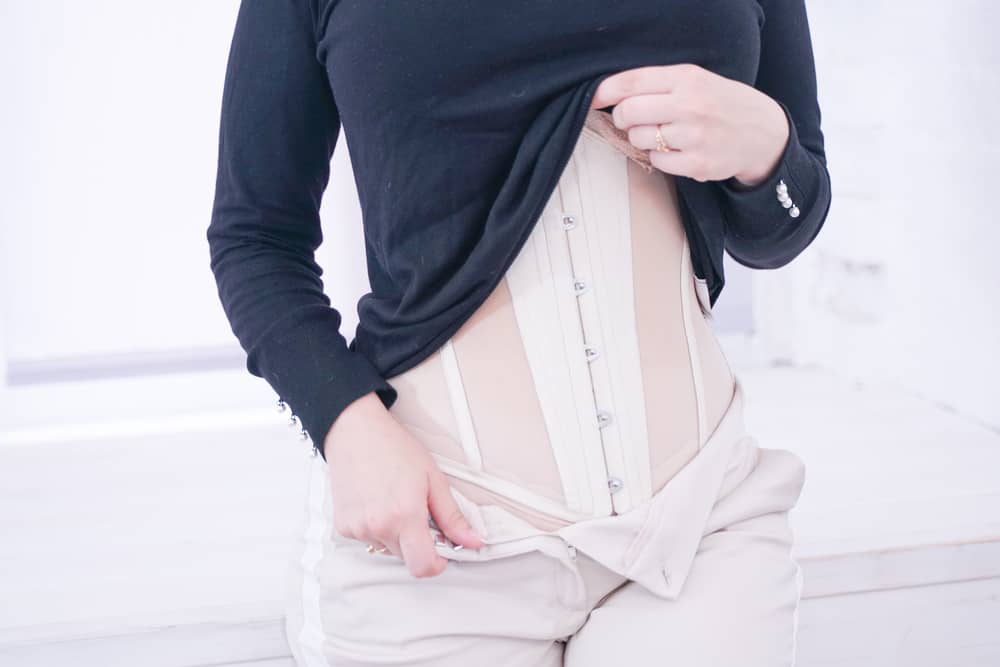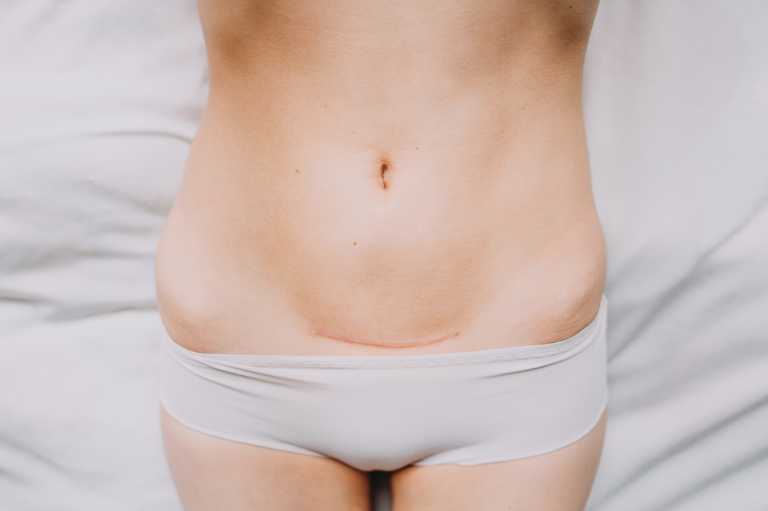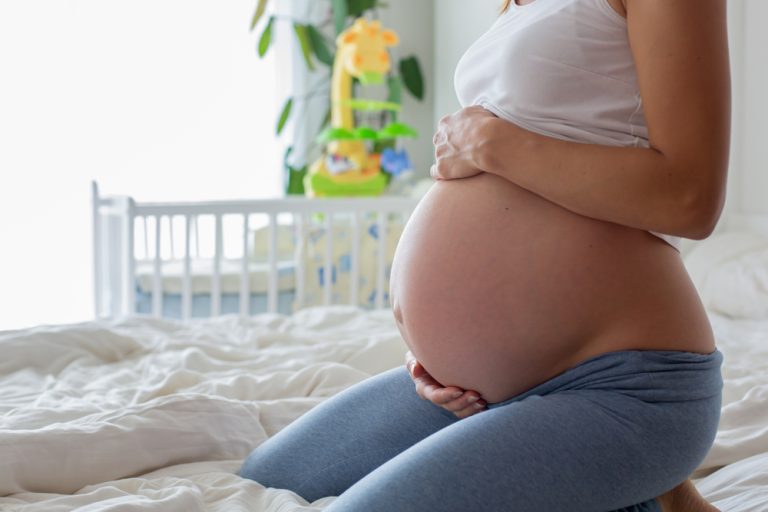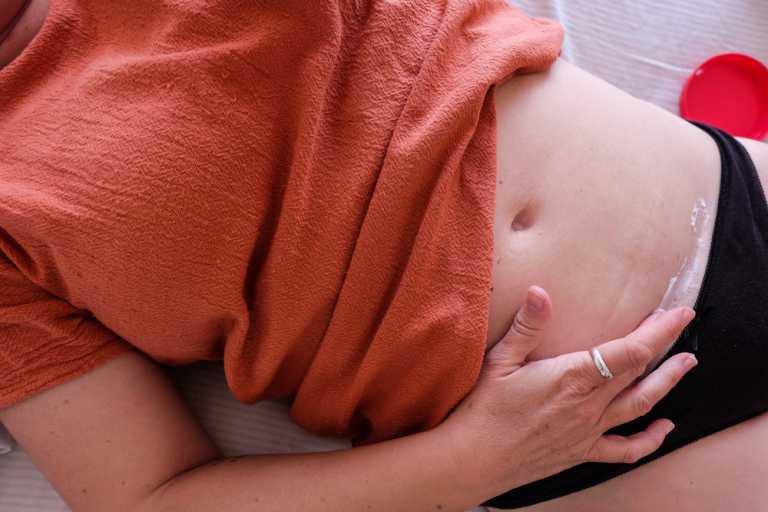As your body changes, you may be looking for ways to support your growing belly, ease back pain, and manage weight gain. One option you might have come across is wearing a waist trainer. This is a garment designed to compress and shape your waistline.
But can you wear a waist trainer while pregnant? Will it work? And is it safe?
Thankfully, we can share everything you need to know, along with some much safer alternatives.
Is It Safe to Wear a Waist Trainer While Pregnant?
Wearing a waist trainer during pregnancy is never safe, and here are the top 7 reasons why:
- Suffocation
According to the American Board of Cosmetic Surgery, wearing a waist cincher can reduce your lung capacity by 30–60%. This can cause dizziness, fainting, fluid buildup in the lungs, and inflammation.
- Reflux
Compression of your digestive tract can cause gastroesophageal reflux disease (GERD). This is a painful condition where your stomach acid is forced to flow back up into your esophagus.
Pregnancy already brings its own risks of reflux, so it’s best to avoid anything that might make it worse.
- Digestive Issues
Restricted blood flow and compression of your intestines can lead to constipation. In extreme cases, it can even cause painful blockages.
The risk is higher when you’re pregnant, as your hormonal changes will already be working to block you up.
- Weakened Core Strength
Some waist trainers advertise a positive effect on your core strength. This is because the garment constantly reminds you to engage your core muscles and suck in your tummy.
However, in the long run, they have the opposite effect. Your body will come to rely on the garment for support, so your core muscles will atrophy and weaken. This can cause back pain in non-pregnant women, so imagine the discomfort when carrying a baby!
- Damage to Internal Organs
Waist trainers put pressure on your liver, kidneys, and bladder. This can damage them or force them to shift into a position that restricts blood flow.
It’s extra complicated during pregnancy as your organs will already be on the move.
- Pelvic Floor Damage
To thin your midsection, training garments push your organs both above and below them. This increases the pressure on your already strained pelvic floor. In extreme cases, this can cause prolapse and incontinence.
So, if you want to avoid peeing when you sneeze, a waist trainer may not be for you.
- Rashes and Skin Infections
The tight fabric traps heat, increases sweating, and prevents evaporation. This can cause irritation, rashes, and bacterial or yeast infections in non-pregnant women.
During pregnancy, you’ll feel hotter and sweat more due to hormonal changes increasing the blood supply to the skin. This raises the risk of a compression garment causing skin complaints.
Can Wearing a Waist Trainer During Pregnancy Harm the Baby?
Wearing a waist trainer during pregnancy isn’t just dangerous for you. It could also harm your baby.
In the first trimester, your uterus will sit safely inside your pelvis. As your baby grows, it will expand up into your abdomen to make room. By the end of your third trimester, it will be 500-1000 times its original size!
Wearing a waist trainer will restrict the growth of your uterus and your baby’s movements. This is not a healthy way for them to develop.
Your baby is also at risk of the side effects that cinchers can cause for you. For example, restricted eating and breathing can cause dizziness and lower oxygen levels. This could cause you to faint and fall on your bump.
Can Waist Training Affect Early Pregnancy?
During early pregnancy, your pelvis will protect your baby from compression. However, waist trainers are still not recommended due to the heightened risk of miscarriage in the first trimester. Again, anything restricting the blood flow or oxygen to your baby is dangerous, and you should avoid it.
Plus, if you’re suffering from morning sickness, waist-cinching will make it much worse!
Are There Any Benefits to Wearing a Waist Trainer While Pregnant?
The three main advertised benefits of waist trainers are:
- Weight loss
- Improved posture
- Creating an hourglass figure
This sounds great, but let’s check out each claim in more detail.
- Weight loss
Cinchers, corsets, and girdles can aid weight loss in two ways.
Firstly, they cause sweating, which can have a slimming effect due to fluid loss. Unfortunately, this is only temporary, and it can also cause dehydration, which is dangerous during pregnancy.
Secondly, they decrease your appetite by squeezing your stomach. This isn’t recommended during pregnancy, as you need those calories, vitamins, and nutrients to feed your growing baby.
- Improved Posture
Waist trainers provide extra support around your middle and force you to sit and stand up straight.
However, as your muscles aren’t doing the work, they will atrophy, and your posture will suffer when you remove the garment.
- Creating an Hourglass Figure
Training your waist can move your organs, deform your rib cage, and help you achieve an hourglass silhouette. Of course, pregnant women can never be hourglass-shaped, so this isn’t something you should aim for. Plus, cinching during pregnancy won’t have any effect postpartum.
Alternatives to Waist Trainers During Pregnancy
Happily, there are many safer and more comfortable alternatives to cinching during pregnancy. The right method for you will depend on your goals.
- Smoothing
Just because waist trainers aren’t safe doesn’t mean you need to attend your party or event without any control garments. You can still achieve a fantastic silhouette safely with specialized maternity shapewear.
Belly bands are a popular choice. These are tubes of stretch material designed to support and smooth your bump.
- Weight Loss
Unless you have been advised by your doctor, calorie-restricted diets and weight loss are not recommended during pregnancy. Instead, you should focus on improving your nutrition and getting a healthy amount of exercise.
When pregnant, your diet should include lots of unprocessed and fiber-rich foods. Foods you should avoid include high-sugar and processed foods.
For exercise, you can replace heavy workouts with walks, swimming, and prenatal yoga. But if it feels good and your doctor approves, it’s usually OK to continue with your pre-pregnancy regime. As long as it doesn’t include kickboxing or skydiving, of course!
- Support
If you were considering a waist trainer for back support, try a maternity belt instead. They provide safe compression, targeted in the right areas for pregnancy aches and pains.





This is really helpful. Thank you!